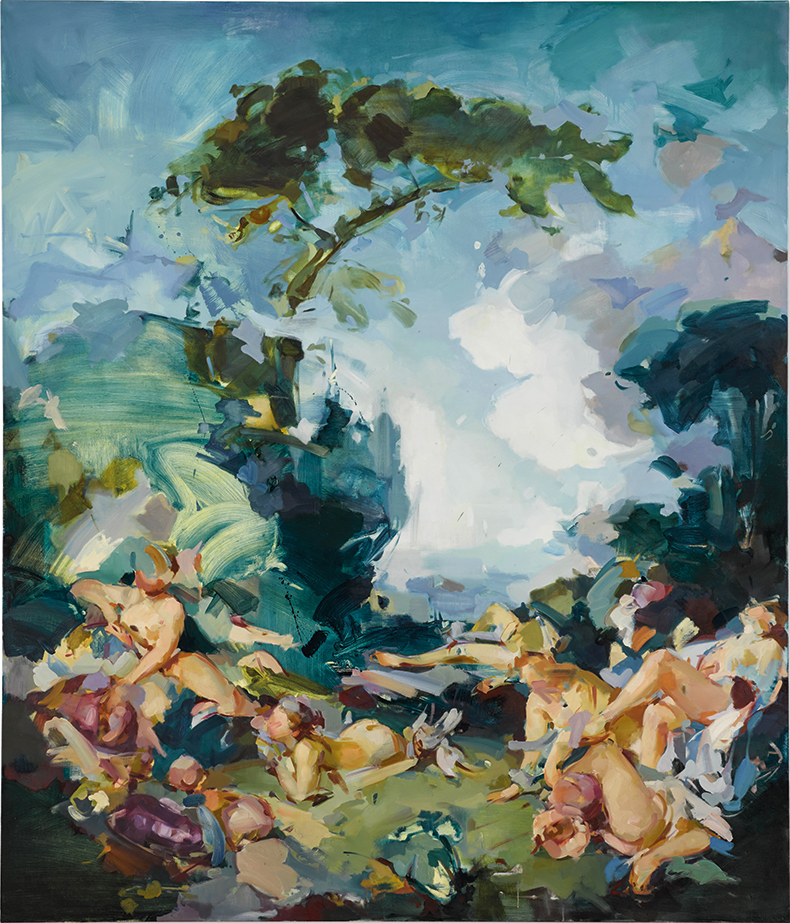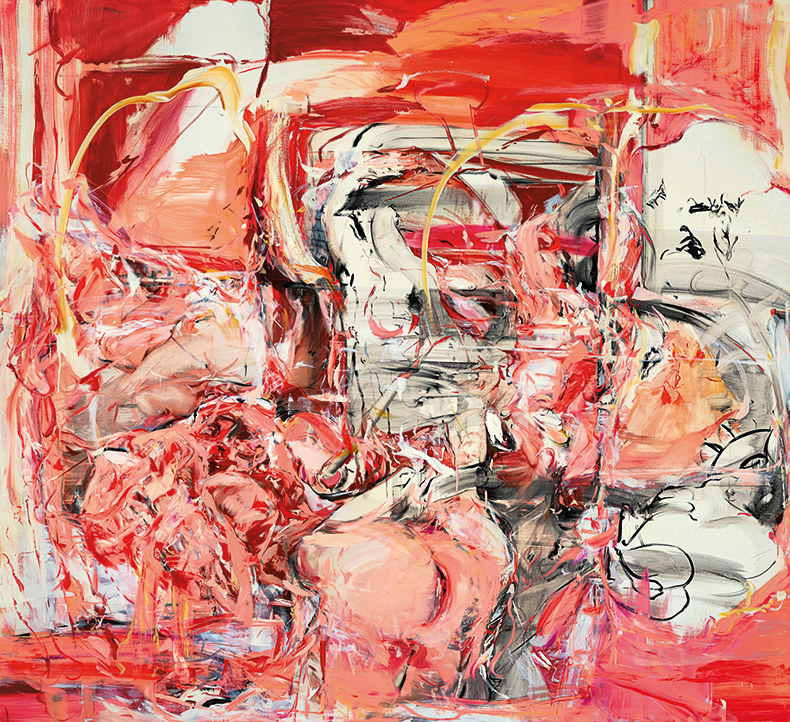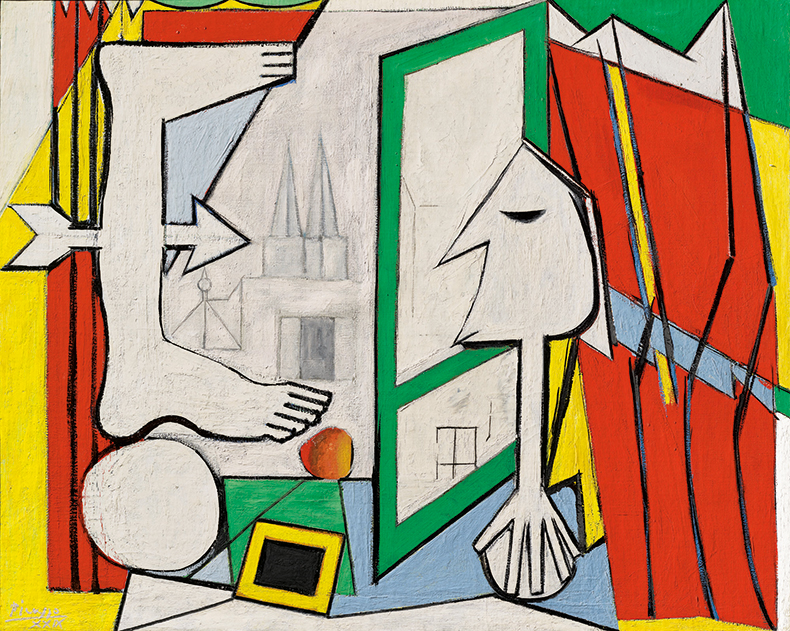From the April 2022 issue of Apollo. Preview and subscribe here.
In early March, London was gearing up for what should have been a revival of the pre-pandemic auction market: face-to-face auction previews with people travelling again for the first time, brunches and drinks gatherings, museum openings and a general mood of excitement in the air. In advance of the Modern and Contemporary Art spring auctions in London due to begin on 1 March, expectations were high. But this was before Russia invaded Ukraine. Despite the extraordinary geo-political crisis engulfing Europe, the auction houses reported strong visitor numbers during their previews. Sotheby’s welcomed more than 8,000 visitors in eight days to its New Bond Street spaces. This enthusiasm for seeing art in real life has also extended to private dealers, as the new director general of the Society of London Art Dealers, Paul Hewitt, explains: ‘The short story is that the good results in the auctions have translated into the dealer world. Attendance in galleries was very good, there was an excitement to be out again, both post-pandemic and post-Brexit. It is really the first time we can look at how London will stand up and I think unequivocally the situation is significantly better than expectations were.’
ArtTactic’s analysis of the marquee week confirms the extraordinary success of the actual auctions: ‘London’s March Marquee evening sales reach a four-year high with totals of just over £400 million.’ These figures include all evening sales but exclude Christie’s live-streamed 20th/21st Century: Shanghai Evening Sale, which generated £26.7m. Together they indicate not only that the market is back in line with pre-pandemic levels, but also that there is no indication that Brexit has put a dent in the secondary market; a finding that auction-house managers such as Dirk Boll, president at Christie’s, are also keen to stress. Both Christie’s and Sotheby’s confirmed similar figures: average withdrawal rates pre-sale, about 90 per cent of all lots sold, and results well within expectations . The atmosphere in the auction rooms was buoyant, with clients from more than 40 countries bidding online, on the phones and in the rooms. Bidders came from Asia and the US – but also, interestingly, from Europe. As Keith Gill, head of Christie’s Impressionist and Modern Art department, points out, ‘We saw more interest from continental Europe than in many seasons, which was encouraging.’
Christie’s and Sotheby’s are still neck and neck in their results. According to the ArtTactic report, Christie’s had a slightly lower average lot price in the evening sale at £2.8m compared to Sotheby’s £3.5m. The increase in lot value is a big driver for the success of an auction and here it is driven by a truly global market which can easily sell as well as buy in London and which overall is not perturbed by a European war. This shows real market confidence. Phillips is still firmly in third rank, not being able to bridge the gap between their success in contemporary and ultra-new art with substantial modern or post-war blue-chip works.
Sotheby’s especially is working hard to take over Phillips’ territory of new artists, launching ‘Now’, its own mini evening sale (that took place, surprisingly, at 4pm), with exceptional results. It set new auction records for the hottest female artists of their generation, such as Flora Yukhnovich, Rachel Jones, Shara Hughes and Hilary Pecis, while Phillips added a new auction world record for Issy Wood. It is encouraging that some of these artists are based in London and that their success feeds back into the primary market, as Victoria Miro’s current show of Yukhnovich’s work can verify. At Sotheby’s Evening Sale the near chaos surrounding the bidding for her rococo-inspired painting Warm, Wet ‘N’ Wild (2020) drove the price to £2.7m, more than ten times its estimate.
Warm, Wet ‘N’ Wild (2020), Flora Yukhnovich. Sotheby’s London, £2.7m

It is not only young London painters that feature strongly in this international market. David Hockney and Cecily Brown also fetched strong prices. Hockney commanded the highest price with his large-scale Garrowby Hill (2017), which fetched £14m at Sotheby’s, far above its estimate of £7.5m–£10.5m. An equally large Self-Portrait on the Terrace from 1984 achieved £4.8m, at the lower end of its estimate at Phillips. Cecily Brown’s biggest price was achieved at Christie’s; The Girl Who Had Everything (1998) reached a comfortably mid-estimate £4.4m. Cheyenne Westphal, global chairwoman of Phillips, confirmed: ‘It was a strong season for British artists.’ Christie’s added Francis Bacon’s Triptych from 1986–87 to the mix, which disappointed at £38.5m from an irrevocable bid but nevertheless adds to the profits.
The Girl Who Had Everything (1998), Cecily Brown. Christie’s London, £4.4m

Compared to recent years, however, it was a very strong season for sought-after, museum-quality masterpieces from some of the best-known artists of the 20th century – and this is what made the difference for the results. The auction houses ensured that high estimates, supported by third-party guarantees, secured the sale of the works. Christie’s introduced to the market a recently restituted Franz Marc painting, The Foxes (1913). This excellent example of the pre-war avant garde brought £42.7m but will be sorely missed in the Kunstpalast Museum in Dusseldorf, its home for the past 60 years. Sotheby’s introduced René Magritte’s L’empire des lumières (1965), which set a new auction record for the artist at £59.4m, and became the most expensive work sold in Europe in pounds sterling at auction. Christie’s stand-alone Surrealist evening sale sold 100 per cent of the lots and brought in £33.5m. It was led by Pablo Picasso’s La fenêtre ouverte (1929), one of the few works in Picasso’s oeuvre which can be considered under the Surrealist banner. The work went for £16.3m to a sole bidder, most likely the guarantor at the low estimate. Surrealist art is still performing very strongly. Sotheby’s decided to move its specialist Surrealism sale to Paris, with a dedicated sale of 24 lots on 16 March. Is this another indicator of the recent upwards trend of the Paris market?
La fenêtre ouverte (1929), Pablo Picasso. Christie’s London, £16.4m

London seems to have bounced back stronger than ever. The reasons are complex and not always encouraging. As works of art have become an ever more important asset class, especially in difficult economic and political times, they are easily traded in a city that has always attracted the ultra-rich. This of course includes collectors from all over the world, including Russia, although the government has started to introduce sanctions and registers of wealth. At best we see again that the market is ‘anticyclical and counterintuitive’, as Christie’s Keith Gill puts it. At worst it shows how, for some, asset-building trumps other concerns during periods of economic and political instability.
From the April 2022 issue of Apollo. Preview and subscribe here.



